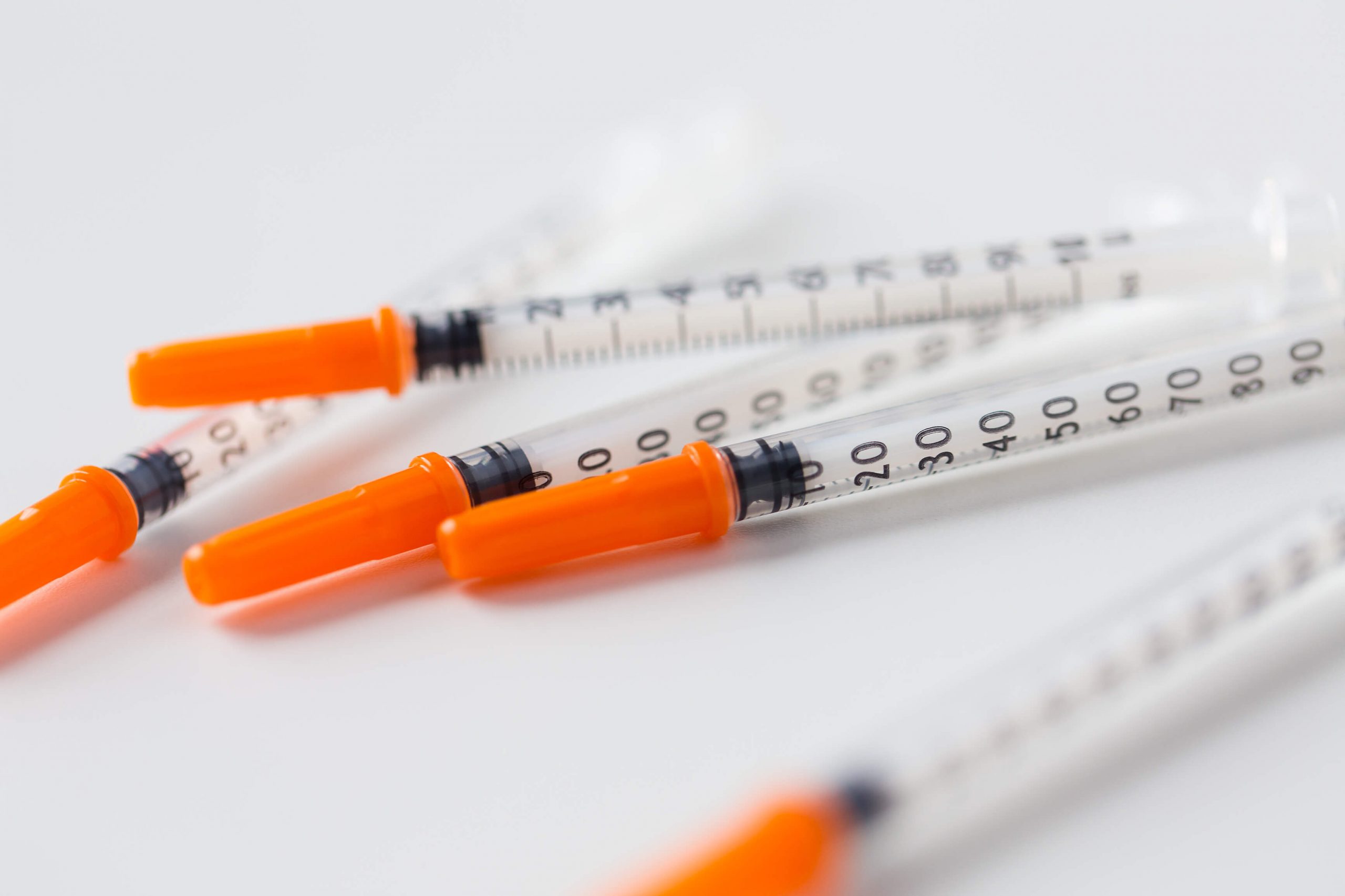

Patients with Type 1 diabetes or Type 2 diabetes commonly use insulin syringes to take insulin. Specifically designed to be self-injected, insulin syringes are equipped with features such as shorter and finer gauge needles and markings in insulin units to make it easier to draw the prescribed dose of insulin with ease, at your home.
Demystifying the Insulin Syringe
An Insulin Syringe consists of the following parts:
The needle: The insulin needle is commonly short and thin and coated with a fine layer of silicon it to smoothly pass through the skin, while causing minimum pain. The needle comes with a protector cap which keeps it covered.
The barrel: The barrel is the long and thin plastic chamber that holds the insulin solution and plunger. It is marked with calibrations to show the number of insulin units the user is injecting.
The plunger: The plunger is the long and thin crossbar that slides up and down the length of the barrel. It serves to draw the insulin solution into the barrel or push it out of the syringe through the needle. A rubber seal at the lower end prevents the insulin from leaking out.
Depending on the size, different types of insulin syringes are available in the market. Syringe sizes range from 0.25 ml to 1.00 ml.
How to Read an Insulin Syringe
Though knowing how to read an insulin syringe isn’t very difficult, it does require you to keep in mind certain points. Here’s all you need to know about how to read an insulin syringe:
- The larger the syringe size, the more insulin it can hold.
- When choosing a syringe, consider the number of units of insulin that you require and how clearly visible the markings on the barrel are. It must be noted that the markings on the barrel of smaller syringes are set further apart and easily visible.
- Most scales on the barrel are in ml (milliliters). A 0.25 ml syringe holds 25 units while a 1.00 ml size syringe holds 100 units.
- In order to prepare the required dose of insulin, the plunger must be pulled down to draw air into the syringe. It must be borne in mind that the quantity of air inside the syringe must be the same as the number of units of insulin needed for the injection.
- Before measuring the correct number of units, make sure to check for any bubble in the syringe. Bubbles should be removed by gently tapping on the syringe.
- When measuring the amount of insulin solution, always read from the top ring i.e. needle side, not the bottom ring or the section that is raised in the middle of the plunger.
- When measuring an amount that is not exactly marked by the dash lines on the syringe, you may have to count between the lines.
- Comes in Unit Pack and Multipack.
Insulin syringes offer a range of benefits. They are affordable, non-toxic, hypo-allergenic, accurate, and easy to administer. All the same, certain precautions must be followed while using insulin syringes. For instance, one must never re-use insulin pen needles or syringes. Also, one must always choose a different site in the same general area for each injection, administering about an inch away from earlier injection sites.
Administered correctly, the insulin syringe is an immensely helpful tool for diabetic patients who no longer need to depend on caregivers to deliver the right dose of insulin.

Add Comment